Carlstedt: English A11
1.c4 c6 2.g3 d5 3.Nf3 Nf6 4.Bg2 dxc4
|
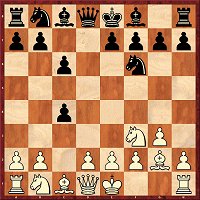
|
|
White
first has to make something of an effort to recover his
pawn. Black can make use of this time and sometimes
very sharp variations arise, in which the side with the
better knowledge can have the advantage. |
Stohl: Old Benoni A44
1.d4 c5 2.d5 e5 3.e4 d6
|

|
|
Here Black is trying to exchange the dark-squared bishops with
Be7-g5, and after 4.Nc3
Be7 5.Nf3 he is even prepared to give up his good bishop with 5...Bg4 6.h3
Bxf3
in order to get rid of the worse one. Igor Stohl
demonstrates several comfortable ways to an advantage
for White. |
Schipkov: Dutch Defence A98
1.d4 f5 2.c4 Nf6 3.Nf3 e6 4.g3 Be7 5.Bg2 0-0 6.0-0 d6 7.Nc3 Qe8 8.Qc2
|
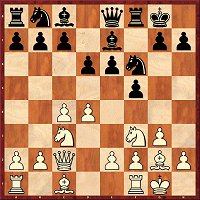
|
|
Putting
the queen on c2 straight away is of course linked to
the plan of getting in e2-e4 rapidly. But it has been
shown that Black can simply allow this, e.g. with 8...Qh5, and White nevertheless does not achieve any advantage.
|
Grivas: Sicilian B33
1.e4 c5 2.Nf3 Nc6 3.d4 cxd4 4.Nxd4 Qb6 5.Nb3 Nf6 6.Nc3 e6 7.Bd3 d6 8.Be3 Qc7 9.f4 a6 10.Qe2
|
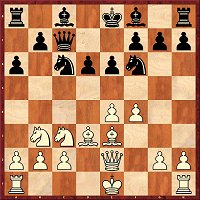
|
|
With
this setup White leaves open the question of to which
side he will castle. But the slight pressure which the
white queen exerts on the e-file is of less value, for
example, than the possible transfer of the queen from f3
to h3, meaning that probably 10.Qf3 makes more sense.
|
Kritz: Sicilian B39
1.e4 c5 2.Nf3 Nc6 3.d4 cxd4 4.Nxd4 g6 5.c4 Bg7 6.Be3 Nf6 7.Nc3 Ng4
|
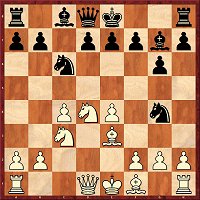
|
|
If you wish to use the Maroczy setup, you need to know the variation with 7...Ng4. Play divides after 8.Qxg4
Nxd4 9.Qd1, when 9...e5 is actually only weakening, whereas after 9...Ne6 White needs to know how he is going to achieve a better game.
|
Moskalenko: French C02
1.e4 e6 2.d4 d5 3.e5 c5 4.c3 Nc6 5.Nf3 Qb6 6.a3 Nh6
|

|
|
Viktor
Moskalenko is convinced that the d4-point should be
attacked straight away. From the diagram White mostly
plays 7.b4 and after 7...cxd4 our author analyses the
lines 8.cxd4 Nf5 and the one with the intermediate exchange 8.
Bxh6.
|
Marin: Ruy Lopez C61
1.e4 e5 2.Nf3 Nc6 3.Bb5 Nd4 4.Nxd4 exd4
|

|
|
Mihail
Marin presents a repertoire for Black with Bird’s
Defence. Equality may not be guaranteed everywhere, but
the lines are playable and can confront an unprepared
opponent with positions of a type which are completely
unknown to him. |
Kuzmin: Ruy Lopez C70
1.e4 e5 2.Nf3 Nc6 3.Bb5 a6 4.Ba4 Nge7
|
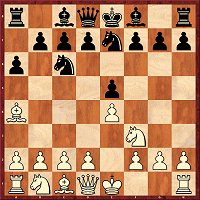
|
|
The author is of the opinion that first 3...a6 and then 4...Nge7 is more precise. 5.Nc3 should be followed with 5...d6 with motifs from the Steinitz Defence. Also 5.d4 exd4 6.Nxd4 is not followed by the fianchetto, but best of all by 6...Nxd4 7.Qxd4
Nc6.
|
Breutigam: Tarrasch Defence D32
1.d4 d5 2.c4 e6 3.Nc3 c5 4.cxd5 exd5
|
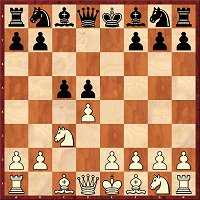
|
|
In
the third part of his repertoire for Black with the
Tarrasch Defence Martin Breutigam investigates the
Marshall Gambit and the early capture on c5. Only the
latter is critical, above all whenever White first plays
5.Nf3
Nc6 and only then 6.dxc5.
|
Postny: Queen's Gambit D37
1.d4 d5 2.c4 e6 3.Nc3 Be7 4.Nf3 Nf6 5.Bf4 0-0 6.e3 Nbd7 7.Be2
|
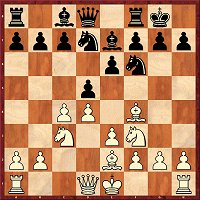
|
|
Levon Aronian introduced 7.Be2
(instead of 7.c5) at the highest level, and above all
he was the first to meet 7...dxc4 with 8.0-0. He managed
to put his opponents under pressure but all the games
ended in draws. Evgeny Postny also examines the
variations which have as yet not appeared on the board.
|
Schandorff: Nimzoindian Defence E39
1.d4 Sf6 2.c4 e6 3.Nc3 Bb4 4.Qc2 0-0 5.Nf3 c5 6.dxc5 Na6 7.c6
|
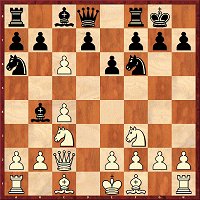
|
|
The
move 7.c6 is an idea of Alexander Morozevich, who has
employed this bizarre move highly successfully on
several occasions. In doing so the Russian has varied
after 7...dxc6, trying first 8.a3, but later 8.g3 and
8.e3. |